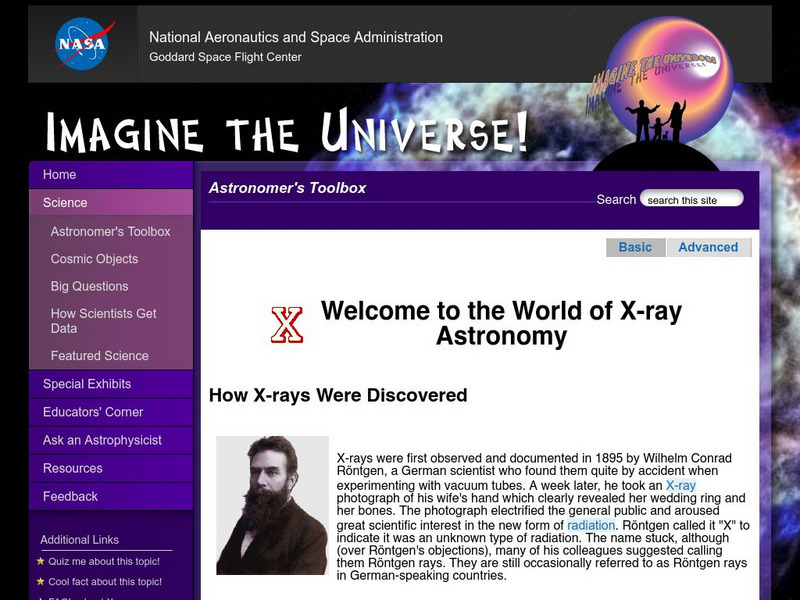Hi, what do you want to do?
Curated OER
Observing Fall Migrants
Students keep a detailed data collection log of the different types of monarch behavior. They track the weather conditions daily and link it to the migration of the monarchs. They summarize their data using either a graph or a computer...
Curated OER
The Reason for the Seasons
Students compare graphs of their data that was generated on a NASA website. For this seasons lesson students complete a lab activity.
Curated OER
The Paleozoic Era
Students access prior knowledge to create a chart of eras. In this Paleozoic era lesson plan, students research the Paleozoic era to find information to create dioramas. Students participate in fossil activities.
Curated OER
Climate Comparison
Students explore climate regions. In this climate lesson plan, students examine the climate regions of Alaska as well as the state of Hawaii. Students research selected Internet sources to gather information regarding the climates...
Curated OER
Air Quality Issues
Learners identify the different layers of the atmosphere. They examine the different types of air pollutants. They also discover laws in effect that work to protect the environment.
Curated OER
Astronomy
A broad sampling of material related to stars is covered here. You will want to review each question to see if it corresponds to your curriculum. The formatting is inconsistent, but easily corrected if you use the information to create...
Curated OER
The Universe
Students recognize that the stages of evolution a star goes through are determined by the size of the star. They conduct research to draw a set of diagrams illustrating the stages in the evolution of three sizes of stars.
Curated OER
Extraterrestrials
Students discuss the possibility of intelligent life in space. In this space science lesson plan, students decipher a radio message electronically transmitted in space. They create their own extraterrestrial welcome greeting.
Curated OER
Using Your Senses
In this senses worksheet, students answer two questions about observations using the senses. Students then give reasons why each sense may not give them all the information they need when making observations.
Curated OER
Mixed Prepositions 12-ESL
For this preposition worksheet, students complete a given text, choosing the correct prepositions. Students click on a "check answers" button for immediate feedback.
Curated OER
Constructing a Spectroscope
Students construct a simple spectroscope. They observe the emission spectrum produce by a source of light.
Curated OER
Environment
Students examine the energy saving benefits of trees. They identify ways in which trees reduce air pollution. They also work together to solve problems related to pollution.
Science4Fun
Science4 Fun: Earth
Learn fun facts and details about the geography and composition of Earth, the third closest planet to the sun and the only planet that contains life.
Ducksters
Ducksters: Astronomy for Kids: The Planet Earth
This site is astronomy for kids and teachers! Here students can learn about the planet Earth of the Solar System including fun facts, mass, day, year, and distance from the Sun.
Other
Missouri Department of Economic Development: Radiant Energy [Pdf]
A one-page fact sheet explaining that the Sun provides radiant energy to the Earth and the processes that the energy plays a part in.
NASA
Nasa: Imagine the Universe: Welcome to the World of X Ray Astronomy
Site recounts how X-rays were discovered as well as who discovered them. Offers graphics, links to facts on this topic, a quiz, and teacher resources.
American Geosciences Institute
American Geosciences Institute: Astronomy
Eight hands-on lessons module in which students explore the characteristics of planet Earth, its moons, the sun, the solar system, planets, and the difference between science fact and science fiction.
PBS
Pbs Learning Media: Our Solar System Lithograph Set
View these amazing high-quality images of our solar system from NASA with this lithograph set. Each lithograph contains images, facts, dates, and general information on a particular subject. Background information and teaching tips are...
NASA
Nasa: Solar System Exploration
Enter our solar system to interact with the planets, moons, asteroids, meteors, and more. Investigate with NASA scientists and explore missions related to space exploration. Read facts, compare statistics, look through resources, and...
Other
National Research Foundation: How Far? How Big? How Many?
Using light as our measuring stick in space, science site provides all types of fun facts using light years and seconds as a reference.
Read Works
Read Works: What's Up in Space?
[Free Registration/Login Required] An informational text about outer space. A question sheet is available to help students build skills in reading comprehension.























